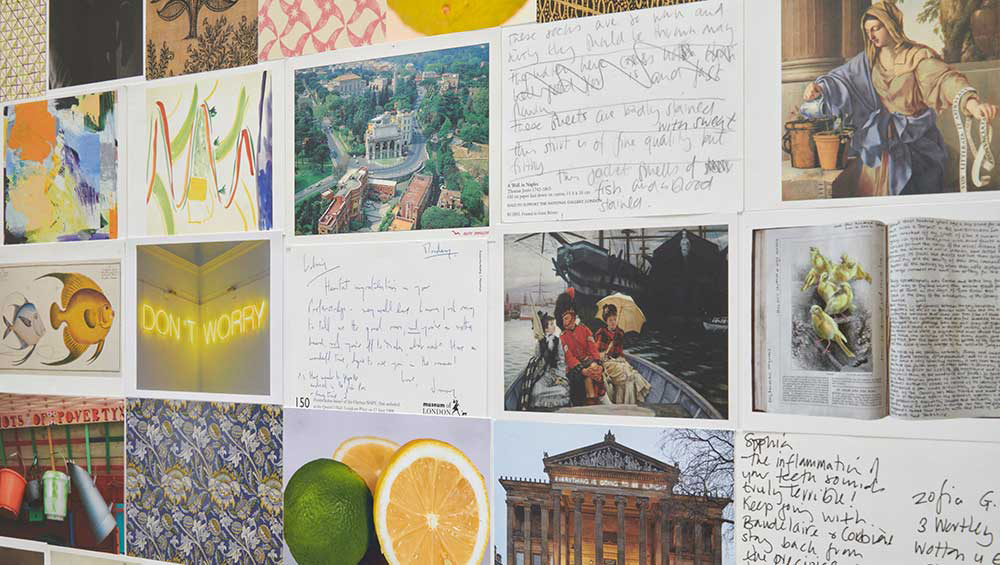
Lubaina Himid with Magda Stawarska: Another Chance Encounter, installation view, Kettle’s Yard, Cambridge, 12 July – 2 November 2025. Photo: Jo Underhill.
Kettle’s Yard, Cambridge
12 July – 2 November 2025
by BETH WILLIAMSON
The multilayered correspondences that Another Chance Encounter comprises make for a conversational exhibition that is outstandingly rich in its scope and extent. It is thoughtful, serious and reflective. It is also convivial, gossipy and witty. It encompasses the entirety of the gallery spaces of Kettle’s Yard, as well as punctuating the former home of Jim and Helen Ede, and Lubaina Himid and Magda Stawarska have approached it with intellectual rigour and a creative generosity that draws the viewer into the conversation and surprises and delights.
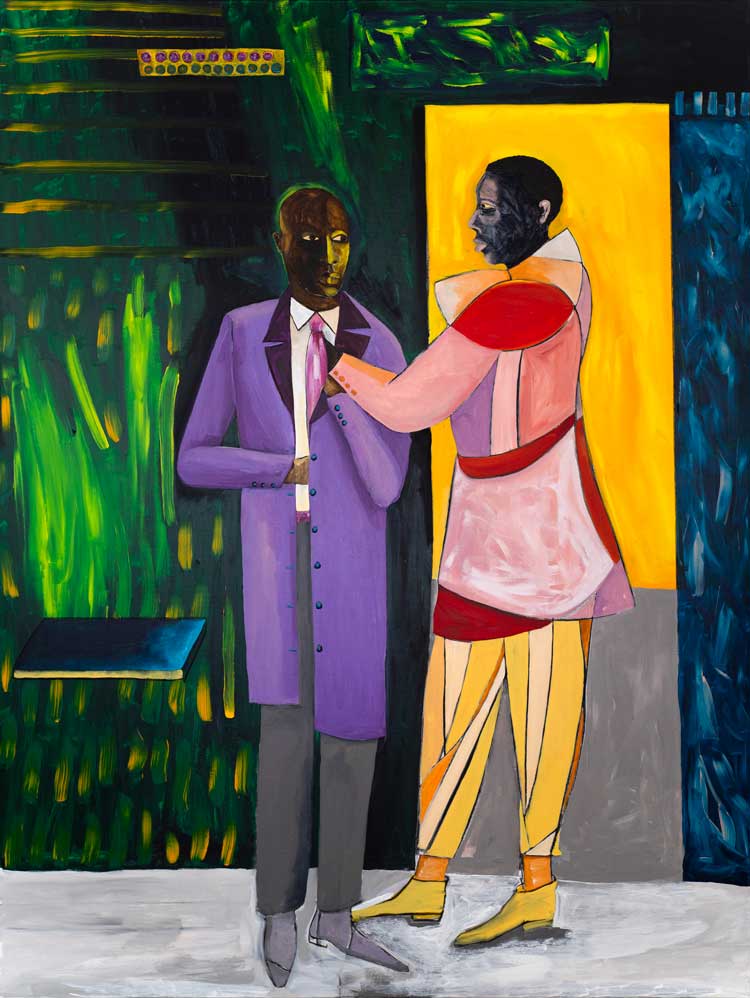
Lubaina Himid, Favours For Years To Come, 2025. Acrylic and charcoal on canvas. Courtesy Hollybush Gardens, London and Greene Naftali, New York. Photo: Gavin Renshaw.
At the heart of everything, of course, is the creative conversation between Himid and Stawarska. Over the course of the past 10 or so years, the two artists have cultivated a rich collaborative practice that weaves together painting, printmaking, sound and installation. The environments they create together are immersive, questioning and full of wonder. In one gallery at Kettle’s Yard is Slightly Bitter (2025), a multimedia installation sparked by their reading of the partial surviving correspondence between the writer and poet Sophie Brzeska and the artist Nina Hamnett, as appear in Brzeska’s book Matka and Other Writings, published posthumously in 2008. The title Slightly Bitter, as Hamid explains in a new documentary film screened in the upstairs research space, is taken from the tone of Brzeska’s and Hamnett’s exchange and is underlined by the proliferation of an acid-yellow colour in the installation and Himid’s paintings, a yellow tulip and a yellow chequered tablecloth beneath a bowl of plums, two details from the historic correspondence on which Himid has expanded.
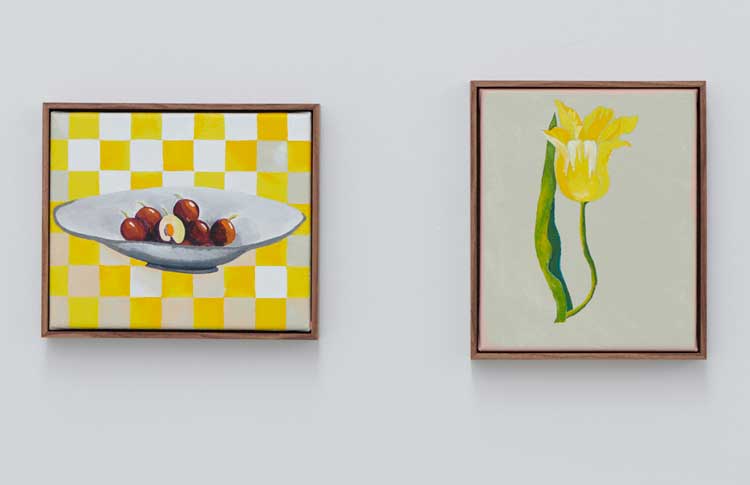
Lubaina Himid with Magda Stawarska: Another Chance Encounter, installation view, Kettle’s Yard, Cambridge, 12 July – 2 November 2025. Photo: Jo Underhill.
Once again, it is a sharp mix of wit and wonder across the space as the two artists enlarge on existing histories and imagine what might have been in the 1917-18 exchanges, of which only Brzeska’s letters survive. The sonic elements of the installation create a feeling of eavesdropping, of listing to an intimate conversation we really shouldn’t be party to. Phonetic text across the wall in English and Polish reminds us of the linguistic exchange between Hamnett and Brzeska, but also between Himid and Stawarska. For the latter, postcards from their own archive create a picture of their much more recent exchanges – Stawarska’s observations on her morning run, relayed to Himid on a postcard, and Himid’s musings on the geography of west London, sent by return. It is in such simple everyday exchanges that deeper understanding develops and richer collaborations are made possible.
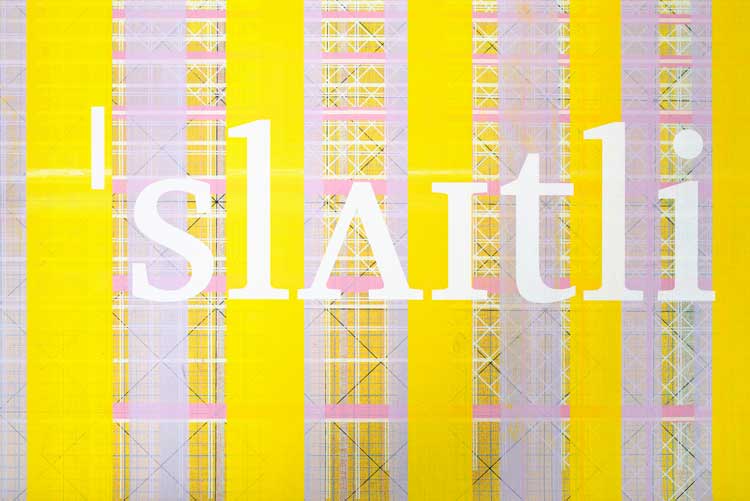
Magda Stawarska and Lubaina Himid. Slightly Bi8er (detail), 2025. Mixed media installation. Courtesy Yamamoto Keiko Rochaix, London, Hollybush Gardens, London and Greene Naftali, New York.
The other main gallery space at Kettle’s Yard is filled with Himid’s large-scale paintings collectively titled How May I Help You? (2025) – conversations of another kind. In paintings developed on her recent Street Sellers (2024) series, Himid presents full-length portraits of shopkeepers and their customers at the thresholds and doorways of their establishments. In each instance, the pair are engaged in conversation. It is impossible to know the subject of such conversation, of course. They may be simply transactional. However, it is entirely possible that they may be more intimate, confessional, perhaps, as is sometimes the case with strangers in such situations when anonymity affords us a certain freedom to speak openly, although there may still be a tendency to hold back. This is precisely the situation that Himid gestures to in her commentary for each painting, where there is often a disconnect between speaking and thinking. The paired figures tend to be positioned a little too close to each other for comfort and yet there is still room for the viewer to enter into the conversation, or at least to imagine what might be being said. In this gallery, as in the last, there is a wooden door, a reminder perhaps of the thresholds we continually cross in conversations.
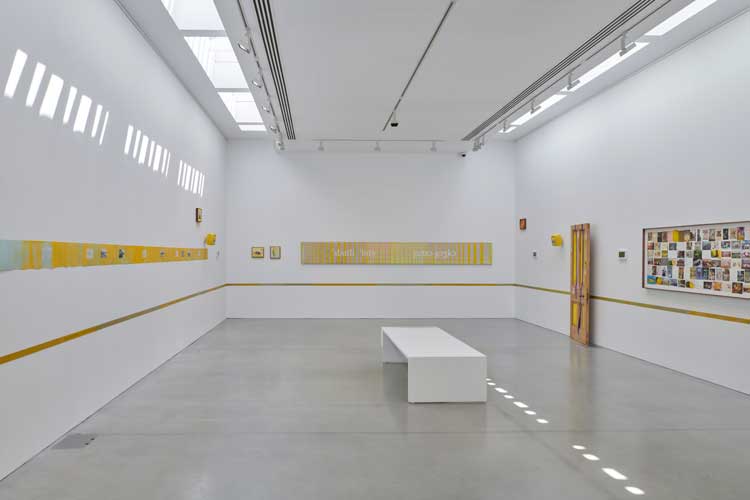
Lubaina Himid with Magda Stawarska: Another Chance Encounter, installation view, Kettle’s Yard, Cambridge, 12 July – 2 November 2025. Photo: Jo Underhill.
Climbing the stairs to the research space above the galleries, there is time and space to explore the film mentioned previously, and past books and catalogues of the artists’ work. Alongside this is a representation of Himid’s The Ballad of the Wing from 1989. The single-wing motif is the hallmark of this body of work where Himid presented a fictional collection of Black cultural objects, a creative and critical assessment of the role played by galleries and museums in the selective preservation, denial and stewardship of cultural memory. Maud Sulter composed a ballad for Himid’s “Wing Museum”, reverberating against Eurocentric world views. It is important to remember that museums must still be vigilant in addressing the same issues that The Ballad of the Wing highlighted more than 35 years ago.
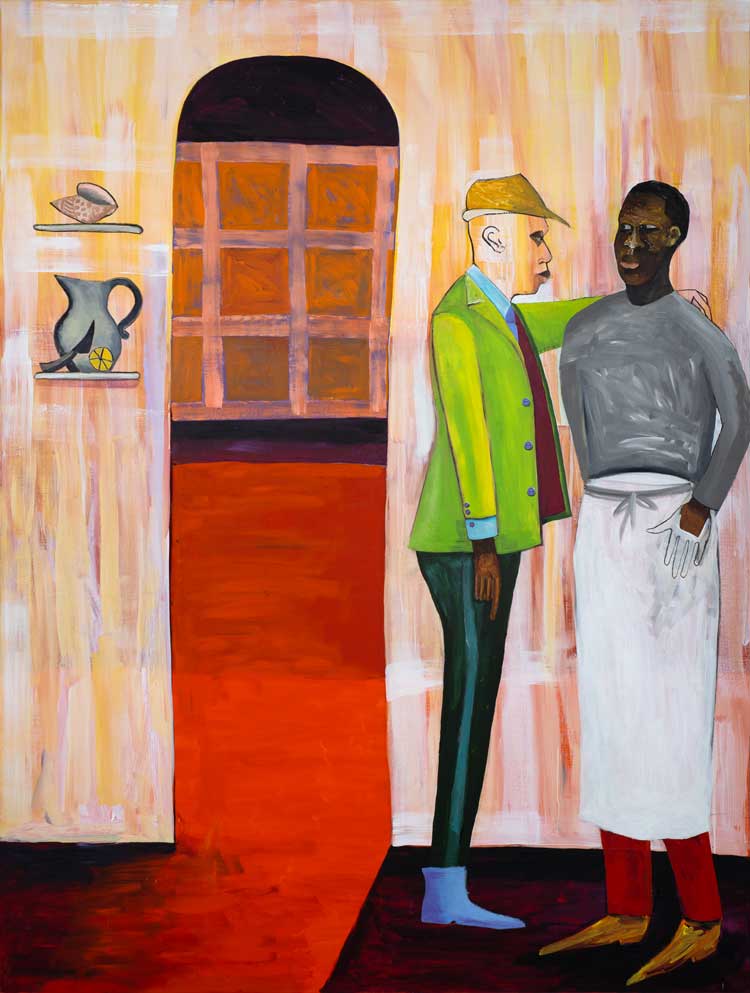
Lubaina Himid, Your Charm Offensive, 2025. Acrylic on canvas. Courtesy Hollybush Gardens, London and Greene Naftali, New York. Photo: Gavin Renshaw.
It is not uncommon for artists showing work at Kettle’s Yard to place a work or two within the house itself. This time, Himid and Stawarska insert six works between them and in such a thoughtful manner. Stawarska’s sound installation Sweet Sharp Taste of Limes (2025) in the kitchen is a sheer delight. A tiny room not usually accessible to visitors, the kitchen is used by staff to prepare flowers for display throughout the house. With its door just held ajar, visitors can listen to the installation as it imagines the sounds we might normally hear in that small space. Next door, Himid’s Saving It for Later (2025) is a witty acrylic painting directly on to the wall inside a neat corner cupboard. Secreted from sight and visible only when the door is opened, it gestures to all the relationships and conversations these walls have been privy to over the years. Upstairs, we find one of Himid’s signature drawer works, Man in a Swiss Knife Drawer (2025), while downstairs a screenprint by Stawarska is slipped into another drawer. One of Himid’s ceramic Jelly Moulds from 2010 sits in the library space while her monumental painting Flying Carpet (2025) points to the sound of a radio playing and water running through a colander, linking to Stawarska’s sound installation in the kitchen below.
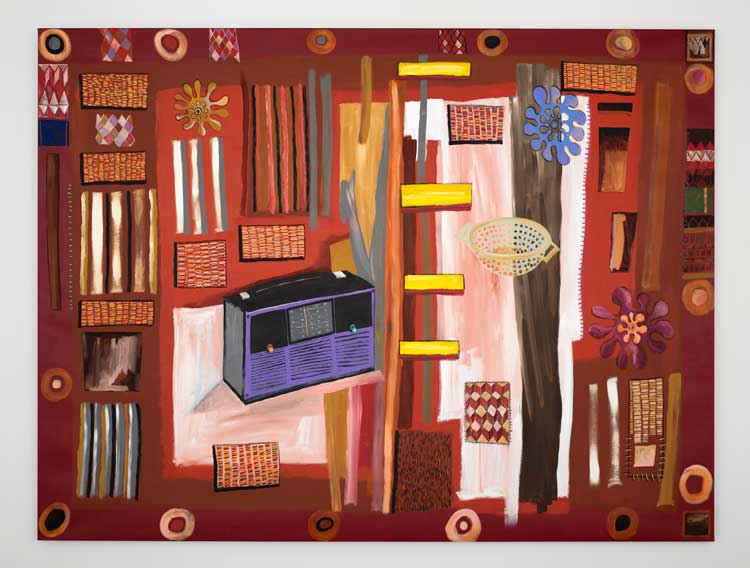
Lubaina Himid, Flying Carpet, 2025. Acrylic on canvas. Courtesy Hollybush Gardens, London and Greene Naftali, New York. Photo: Gavin Renshaw.
This whole exhibition is so carefully considered in its layering of conversations and opportunities for chance encounters. From Slightly Bitter and How May I Help You? in the main galleries to a delve into the historic The Ballad of the Wing, the possibilities are endless. But it is in the Kettle’s Yard house that the work of Himid and Stawarska really shines with its intellect and ingenuity. What it offers the visitor is an opportunity to think afresh about the past and to reimagine the different sorts of conversations and encounters that might be possible in the present and the future. Emerging from the Edes’ 20th-century vision comes an opening up of language and ideas in present times.